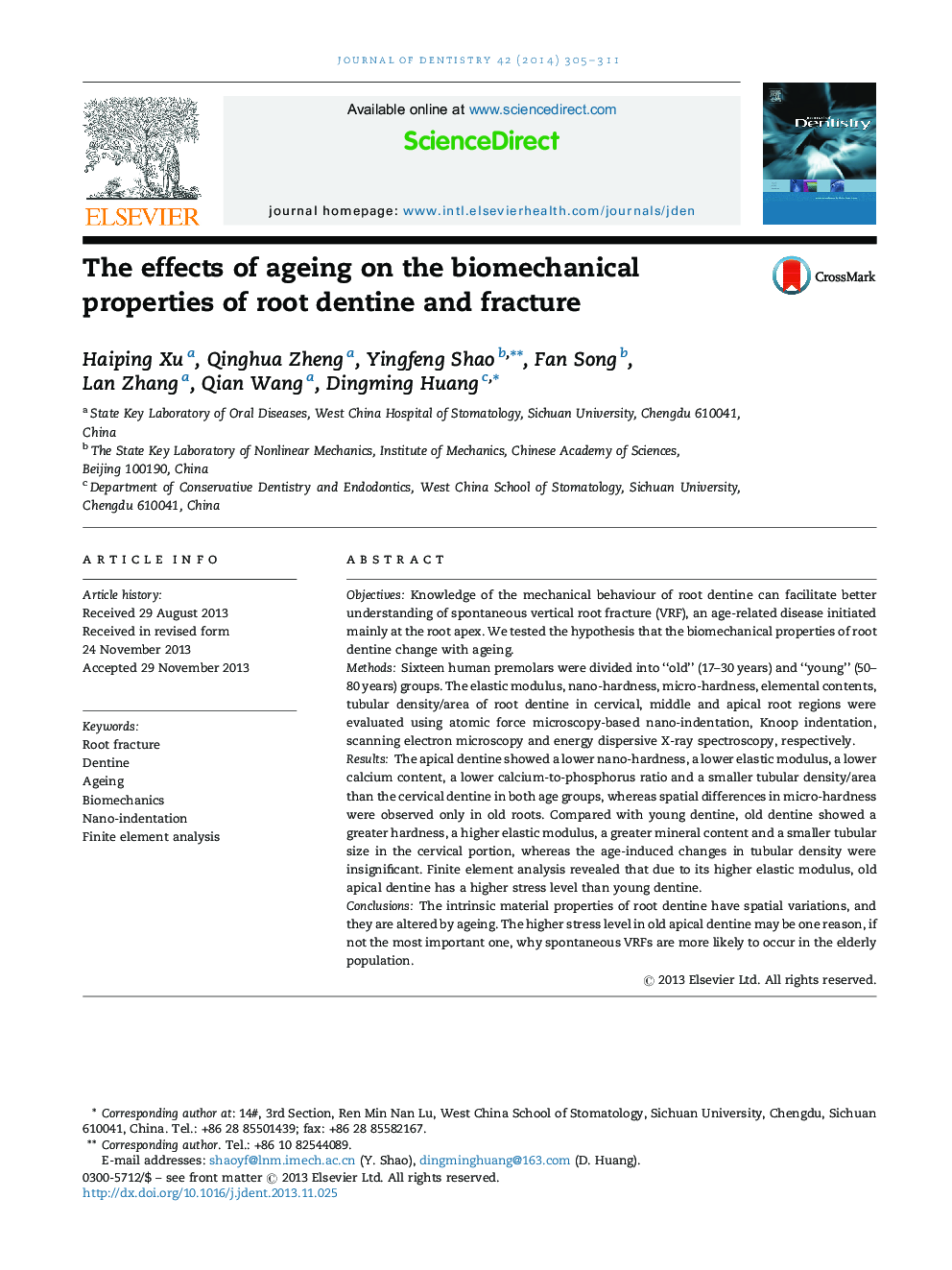| Article ID | Journal | Published Year | Pages | File Type |
|---|---|---|---|---|
| 6053621 | Journal of Dentistry | 2014 | 7 Pages |
ObjectivesKnowledge of the mechanical behaviour of root dentine can facilitate better understanding of spontaneous vertical root fracture (VRF), an age-related disease initiated mainly at the root apex. We tested the hypothesis that the biomechanical properties of root dentine change with ageing.MethodsSixteen human premolars were divided into “old” (17-30 years) and “young” (50-80 years) groups. The elastic modulus, nano-hardness, micro-hardness, elemental contents, tubular density/area of root dentine in cervical, middle and apical root regions were evaluated using atomic force microscopy-based nano-indentation, Knoop indentation, scanning electron microscopy and energy dispersive X-ray spectroscopy, respectively.ResultsThe apical dentine showed a lower nano-hardness, a lower elastic modulus, a lower calcium content, a lower calcium-to-phosphorus ratio and a smaller tubular density/area than the cervical dentine in both age groups, whereas spatial differences in micro-hardness were observed only in old roots. Compared with young dentine, old dentine showed a greater hardness, a higher elastic modulus, a greater mineral content and a smaller tubular size in the cervical portion, whereas the age-induced changes in tubular density were insignificant. Finite element analysis revealed that due to its higher elastic modulus, old apical dentine has a higher stress level than young dentine.ConclusionsThe intrinsic material properties of root dentine have spatial variations, and they are altered by ageing. The higher stress level in old apical dentine may be one reason, if not the most important one, why spontaneous VRFs are more likely to occur in the elderly population.
